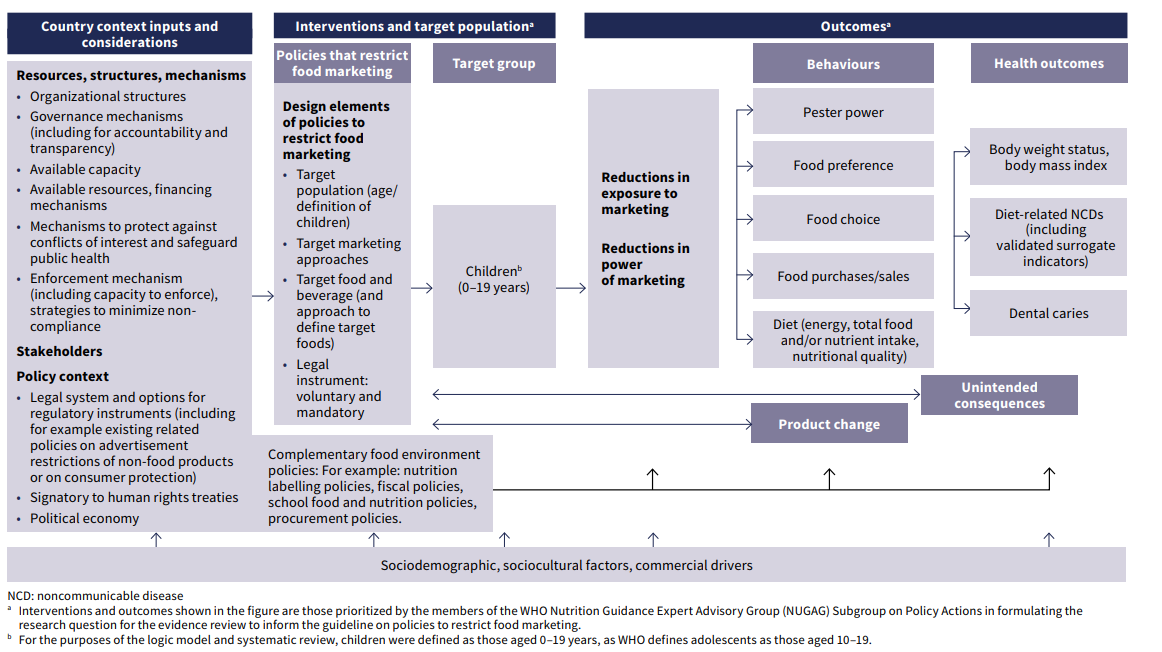The World Health Organization (WHO) suggests implementation of policies to restrict marketing of foods high in saturated fatty acids, trans-fatty acids, free sugars and/or salt to which children are exposed, and that such policies:
- be mandatory;
- protect children of all ages;
- use a government-led nutrient profile model to classify foods to be restricted from marketing;
- be sufficiently comprehensive to minimize the risk of migration of marketing to other media, to other spaces within the same medium or to other age groups; and
- restrict the power of food marketing to persuade.
This guideline builds on the 2010 WHO Set of recommendations on the marketing of foods and nonalcoholic beverages to children, endorsed by the Sixty-third World Health Assembly in May 2010 . Since then, the evidence on the harmful impact of food marketing has grown; however, country action remains limited, and children continue to be exposed to marketing for ultra processed foods. New marketing media have also evolved, most notably digital marketing, which poses a growing concern.
Thus, this guideline’s objectives are to:
- provide evidence-based recommendations and implementation considerations for policies to protect all children from the harmful impact of food marketing;
- enable evidence-informed advocacy to advance policy action to restrict food marketing to which children are exposed;
- guide future research to further strengthen the evidence base for policy action;
- and contribute to the creation of healthy food environments that enable healthy dietary practices among children

Evidence from a systematic review showed that policies to restrict food marketing to which children are exposed may affect food purchasing by or for children. The evidence also showed that such policies may have effects on wider society, such as reduced investment in television advertising of ultra processes foods, and reduced food and beverage advertising revenue on children’s channels; these changes were considered favourable to public health.
The overall evidence on the effect of policies on children’s exposure to food marketing and the power of food marketing was inconsistent. Analyses by policy design elements, however, showed that reductions in children’s exposure to food marketing were more often found with:
- mandatory policies;
- policies designed to restrict food marketing to children, including those older than 12 years; and
- policies that used a government-led nutrient profile model to determine the foods for which marketing was to be restricted.
The analyses by policy design elements also showed that reductions in the power of food marketing were more often found with:
- mandatory policies; and
-
policies designed to restrict food marketing to children, including those older than 12 years